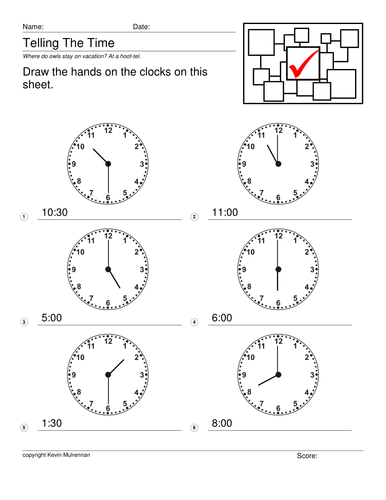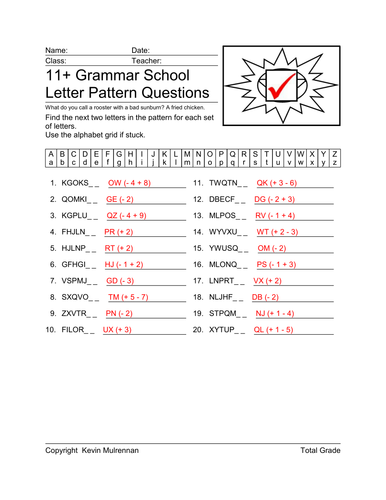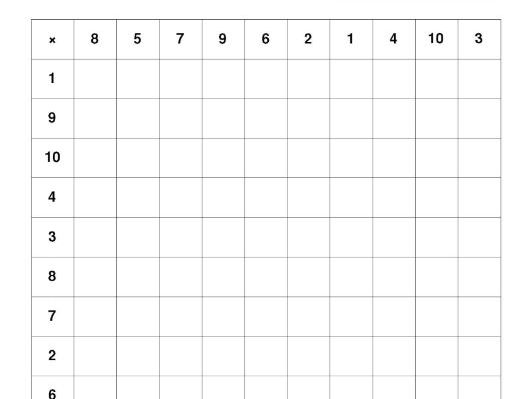403Uploads
117k+Views
38k+Downloads
All resources
Sale

Back to School The Piano by Aidan Gibbons Year 6 Literacy Planning
Great planning and powerpoints on this fascinating topic.
sample :
Speaking
• Tell a story using notes designed to cue techniques such as repetition, recap and humour
Drama
• Reflect on how working in role helps to explore complex issues
Understanding and interpreting texts
• Infer writers’ perspectives from what is written and from what is implied
• Compare different types of narrative and information texts and identify how they are structured
Creating and shaping texts
• Reflect independently and critically on their own writing and edit and improve it
• Experiment with different narrative forms and styles to write their own stories
Sentence structure and punctuation
• Adapt sentence construction to different text-types, purposes and readers
• Punctuate sentences accurately, including using speech marks and apostrophes
Understand, analyse and compare several ‘visual texts’.
Comment on the technical parts of a visual text.
Write a review using correct format and language.
Whole Class Shared Learning
Guided and Independent Activities:
Start to understand what is meant by a ‘visual text’. What do we know so far about narrative writing? Create a list of facts to add to working wall including: fictional, dialogue, opening etc.
Explain to the children briefly, that they are going to watch a short, animated film, entitled ‘The Piano.’ Explain also that there is no dialogue or narration; it will be up to the children to decide what the film is about, to answer simple questions, raise some of their own and provide their own explanations for what they see.
Tell the children that they’re going to watch the film, quietly and without comment at first. Then, watch ‘The Piano’ by Aidan Gibbons.
Model completing thinking feeling and speech shapes linked to the narrative.
Sale

Year 5 Poetry Planning Poetic Style – Valerie Bloom/Pie Corbett
Nice planning :
sample :
Read 3/4 Pie Corbett poems (see list below this plan or plan resources) – NOT Wings. Discuss the poems read eg which one did you like best and why? Is anything similar about the poems? Focus their attention onto things that are typical of Pie Corbett. Use 3 headings: Subject matter/Style of poem/Language. Discuss each of these (subject matter is what the poem is about eg nature, travelling, observations etc). Style is free verse or strict rhythm/regular or irregular rhyming patterns, use of speech or dialogue etc. Language refers to the vocabulary – the use of adjectives and descriptions, metaphors or similes eg ”I heard the paving slabs groan as they muscled for space.” (See plan resources.) Start looking at poems of Pie Corbett under these 3 headings. Give chn time to talk in pairs/small groups about each heading and take feedback. Ask chn to come up and scribe some ideas under each heading. Explain that we will now be exploring some of these headings in more detail. Easy
Give chn a selection of Pie Corbett poems. Model reading a couple to the chn. Discuss what was similar or different in terms of the subject matter. Chn to then read some more poems in pairs and start to sort them into groups that are similar and why. Stick the similar poems onto A3 paper and make rough jottings about why they are similar. TD Medium/Hard
Work in pairs or 3s. Take turns to pick a Pie Corbett poem and read it out loud to rest of group. Repeat this until lots of poems have been read. Provide highlighting pens & poetry checklist (plan resources) to guide their discussion. Ask chn to go back over each poem carefully & highlight any language that makes the poem interesting eg adjectives & descriptions. Give chn the metaphor & simile example sheet (plan resources) to refer to and see if they can highlight any of these in another colour. Make sure chn annotate their highlighting with their own comments. Is there anything linking these Pie Corbett poems together? Does he repeat any language techniques? Finally they look at the style of the poems. Is there a regular rhythm in the poems? Do they use speech?
Sale

Back to School Literacy Year 6 Stories by significant authors J K Rowling
Lots of great planning for an exciting unit.
Nice powerpoints.
Sample :
Share the learning outcome for the unit with the children; share the concept of the working wall. What is narrative? Fact or fiction? Ascertain that this unit is about fiction/narrative/stories. We have three weeks to achieve our learning outcome.
Ask children what they know about JK Rowling. Who is she? What is her job? (use correct terminology- she is an ‘author) Where is she from? (Born in Gloucestershire) Can children name any of her books? (Harry Potter series plus several supplements)
Etc.
Activity One
Come back together, show children a picture of JK Rowling – does this help?
Children to move to next group’s poster and add any more info that they can now think of. Is there anything they agree/disagree with?
Lead into a class discussion on this famous children’s author:
Has anybody read any of her books?
What are her stories about? What genre do you think her stories are written in? (Clarify what we mean by ‘genre’ if needed). What is the purpose of narrative writing? (Display ‘to entertain and enthrall’ on the working wall).
Read first tale from ‘Tales of the Beadle Bard’ – The Wizard and the Hopping Pot. Discuss what is distinctive about this story (what does it remind you of?)
Sale

1000 questions Maths Advanced Addition Mathematics
1000 questions Maths Advanced Addition
Answer sheets provided.
Good for homework
Good to fill time
Good extension work
Sale

Kindlekrax Teaching Materials and Planning Back to School Year 5 Literacy
Planning and worksheets.
Read chapter 3 and 4. Discuss the characters of Ruskin and Elvis. Do you like these characters? Explain. What do they look like? How do they move? Do they have friends/ family? What clothes do they wear? Discuss. Draw up a list of ideas.
Task: To compare the characters of Ruskin and Elvis supporting your description with evidence from the text. Children to describe each character and complete an illustration.
Children to check over their work and improve it. Discuss the comparisons they have made. Which character is the most interesting? Which do you like? Why?
Highlight the WALT. Read p.27 ‘The playground was made of asphalt that sparkled in the sunlight like crushed diamonds on black velvet.’
Describe your school using images like this.
The hall was…
My classroom was…
My teacher is…
Task: Write a character description of Ruskin using the three shot camera frame.
Model how to write the character description using the frame (use Elvis). Long shot, mid shot, close up and reveal.
Sale

11 Plus Letter Patterns Volume One Logic Puzzles
100 sheets with answers.
The sort of thing that’s good for eleven plus prep.
Good for logical thinking.11+ Grammar School
Letter Pattern Questions
What do you call a rooster with a bad sunburn? A fried chicken.
Find the next two letters in the pattern for each set
of letters.
Use the alphabet grid if stuck.
KGOKS_ _ OW (- 4 + 8)
QOMKI_ _ GE (- 2)
KGPLU_ _ QZ (- 4 + 9)
FHJLN_ _ PR (+ 2)
HJLNP_ _ RT (+ 2)
GFHGI_ _ HJ (- 1 + 2)
VSPMJ_ _ GD (- 3)
SXQVO_ _ TM (+ 5 - 7)
ZXVTR_ _ PN (- 2)
FILOR_ _ UX (+ 3
Sale

Telling The Time 96 Worksheets with Answers Maths Differentiated Clocks KS1 KS2
98 worksheets plus answers on telling the time.
Pupils have to draw the time on the clock faces.
Plenty of variety on the sheets. e.g. time on the hour, half hour, quarter hour, plus some five minute ones.
Sale

11+ Verbal Reasoning Questions Letter Patterns Vol 1
I have designed 100 worksheets on letter patterns for the 11+ non verbal reasoning questions. There are 100 worksheets. Letter patterns is an important aspect of the 11+ exams. Ideal for parents, pupils and tutors. Answer sheets provided. Introduce some logic and problem solving skills to students with the Letter Patterns worksheet. Sets of letters related in some way are displayed. Students must find the next two letters in the pattern for each set of letters. You can see an answer sheet in my picture with the answers in red.
Sale

Teaching Resources 100 worksheets Time Passages KS2 Telling the Time
I have designed 100 worksheets on time passages for primary school children. They have to draw the time hands on the clocks on the sheets. What time will it be? - There are two clocks . The first clock shows a time, the second clock is blank. A question like "What time will it be in 2 hr and 20 min?" appears below the clocks. The student draws the answer on the second clock. You can use your professional judgement to choose the appropriate sheet. Answer sheets are provided for all worksheets.
Sale

Teaching Resources 100 worksheets Coins KS1 Teachers Counting KS1 KS2
I have designed 100 worksheets on coins for primary school children. I have used a variety of coins, a variety of difficulty and a variety of numbers of questions per sheet. Pupils write on the sheets how much it all adds up to. Answer sheets are provided for all worksheets.
Sale

Teaching Resources worksheets Shapes Maths Triangles Octagons
I have designed 100 worksheets on shapes for primary school children. They have to write the name of the shape on the sheet. An answer sheet is in the picture. A great reinforcement exercise or you can give a sheet to a bright pupil to keep them occupied. You can use your professional judgement to choose the appropriate sheet. Answer sheets are provided for all worksheets.
Sale

Teaching Resources worksheets Literacy Crosswords KS2 English TEFL
I have designed 100 worksheets on Literacy crosswords for primary school children. I have used common English words. Ideal for 11+ preparation. Ideal for Literacy. Ideal for people learning English. Answer sheets are provided for all worksheets.
Bundle Sale

Maths Worksheets Bundle Addition Division Maths Patterns
A great Maths bundle.
Loads of worksheets to keep the pupils busy.
Includes:
100 Worksheets Addition Maths Easy at Start Hard at the End
Division Worksheets for Primary School Children Maths Mathematics Homework
Maths Patterns 100,000 Questions Numeracy
Sale

Teaching Resources 50000 Questions Fractions Maths KS2
I have designed 100 worksheets of 12 pages each (50000 questions in total) on fractions. They are suitable for years 5 and 6 i.e. 10 and 11 year olds. They could be used in the first few years of secondary school too, or for adults who need help with Maths. There is a wide range of difficulty. You can dip into the worksheets and pick the ones you like. The further you go into a worksheet the more difficult it is as I have used bigger denominators, mixed and whole numbers, a wider range of numbers etc. There are questions on: Comparing fractions Division with Whole Numbers fractions addition fractions and Decimals fractions multiplication fractions subtraction Mixed operations with fractions Multiplication with whole numbers Simplifying fractions You can use your professional judgement to choose the appropriate sheet. You can pick and mix, leave questions out etc. it’s your choice!
Bundle Sale

KS2 Worksheets Bundle Simplifying Fractions Shapes Table Drills
Mega bundle of KS2 worksheets.
Includes
Simplifying Fractions 100 Worksheets with Answers Maths Mathematics KS2
Teaching Resources worksheets Shapes Maths Triangles Octagons
Teaching Resources worksheets Table Drills Maths Times Tables Multiplication
Sale

Times Tables Resource Suitable for KS2 Maths Multiplication Worksheets
100 sheets I’ve designed for times tables.
There are a variety of sheets, getting progressively more difficult.
Some are 10 by 10, some 12 by 12, some in order, some jumbled up.
The pupils have to fill in the blanks on the grid. Simple but effective.
Sale

1000 Questions Advanced Division No Reminders KS2 Mathematics Calculator Use
Please check out my bundles which provide great value.
1000 questions on division. There are no remainders
Great for calculator use.
Answers provided.
Pupils divide a three digit number by a 2 digit one.
Sale

1000 Questions Mathematics Advanced Division KS2 Calculator Use
Please check out my bundles which provide great value.
1000 questions on division.
Great for calculator use.
Answers provided.
Pupils divide a three digit number by a 2 digit one.
Sale

Maths Puzzles Across Down Subtraction 100 Puzzles Plus Answers
100 puzzles plus answers.
Great for reinforcing maths.
Across-Downs is a fun activity that reinforces addition and subtraction skills.
The object of the exercise set is to find the answer for each row and column, then use those answers to calculate the final answer in the lower right-hand corner of the puzzle.
This set tests subtraction.
Sale

1000 questions Multiplication Powers of Ten Mathematics KS2 Calculator use
Please check out my bundles which provide great value.
1000 questions on multiplication.
Great for calculator use.
Answers provided.
Pupils multiply a 2 digit number by a 2 digit one. The second number is a power of 10 (e.g. 20, 30, 40 etc.)




















